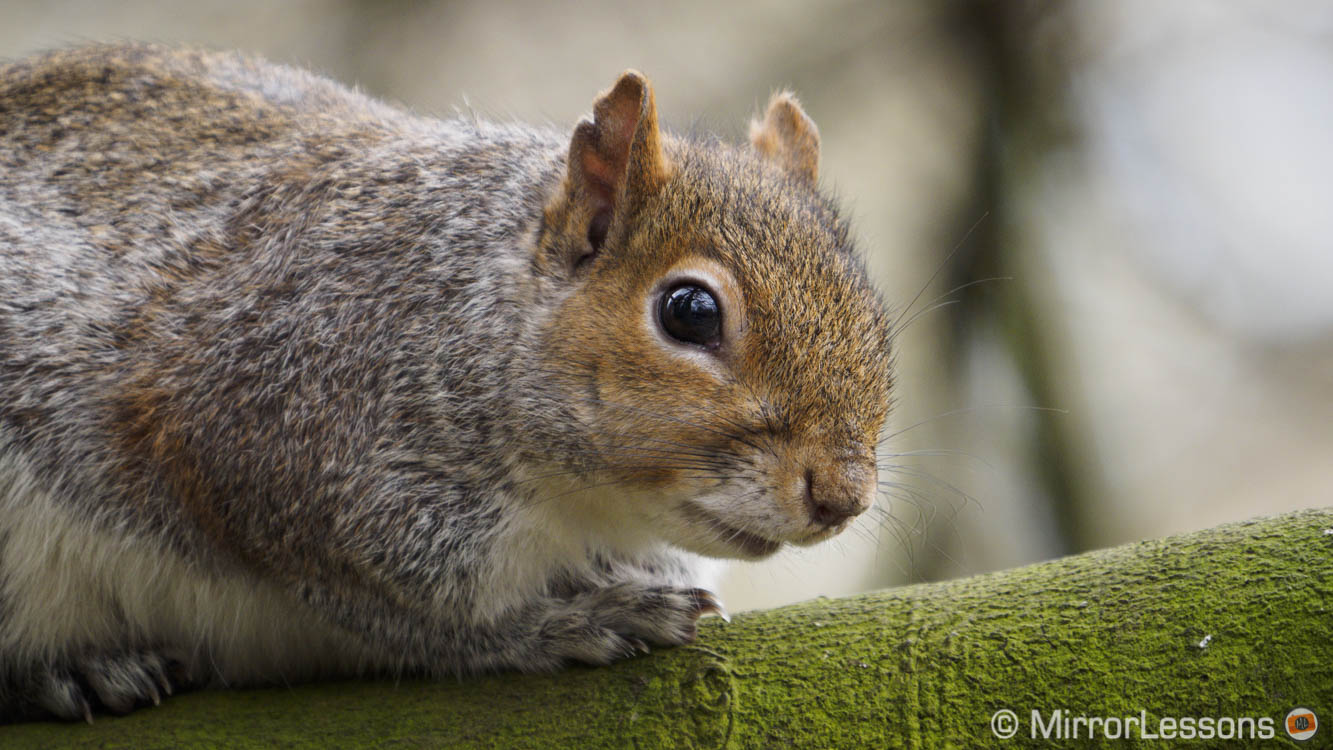Cover photo taken with the Olympus OM-D E-M1 at f/6.3.
Yesterday we received the brand new Panasonic Leica 100-400mm lens to review. Knowing that the good weather wouldn’t last long, I spent all of yesterday afternoon and this morning at our favourite natural reserve in Wales, Ynys Hir. I collected a good variety of images, so I decided to share them with you right away.
Update: the full 100-400mm review is now online!
Many readers began asking about this lens after reading our Olympus 300mm f/4 review. Here you can have a first glimpse at how it performs for a real-world nature shoot. You can also read my first impressions below.

- Size and weight: as you can see from the image above, it is larger and heavier than the Panasonic 100-300mm f/4-5.6. However it is not uncomfortable to use on either the Lumix GX8 or the OM-D E-M1. Given the zoom range this lens gives you (200-800mm 35mm format equivalent), I still find it compact.

- Build quality: superb metal barrel. The hood is also made of metal. The tripod mount mechanism is really clever and very comfortable to use when you unlock or lock it in landscape or portrait position. The bottom part can easily be detached without removing the entire collar. However it only rotates 45°. The focus ring is smooth and nice to use. The lens doesn’t have an internal zoom mechanism so it extends quite a lot when zooming in.

Important Note: the lens Panasonic sent us is a pre-production sample. The optical quality is final (otherwise they wouldn’t have sent it in the first place) but they warned me about some imperfections concerning the stiffness of the zoom ring and other minor flaws. They assured me that the final version won’t have any of these problems. So far, only the zoom ring has caused me some annoyance but I repeat: this is only related to my pre-production sample.
The AF motor seems fast and accurate on both the Lumix GX8 and Olympus OM-D E-M1. I haven’t put the Power O.I.S. through its paces yet, nor have I checked the effectiveness of the stabilisation combined with the Dual IS system of the GX8. I’ll reserve this for the final review. For these shots, I used relatively safe shutter speeds (down to 1/100s) and got good results (with Anti-Shock 0s on the E-M1 and the electronic shutter on the GX8).
As for the optical quality, I can say for now that the lens seems live up to its promise. I mainly shot at 300mm and 400mm because it was naturally the first aspect of the lens I wanted to test. But as you will see further down, being able to zoom out to 100mm was useful when I wanted to capture a larger view.
At 400mm and f/6.3 (the fastest aperture at that focal length), the results are quite good. The lens seems to perform sligthly better at f/8.


But enough with words: almost all the images below are available in their native resolution of 20MP or 16MP. Just click on them to open the full resolution version. They were exported from the RAW files with minor adjustments made in Lightroom.
All shots were taken hand-held. I’ve also added a few extra comments along the way. Enjoy!
Update: you can also watch below a short video shot in 4K with the Lumix GX8.
Update II: some BIF (Birds in Flight) shots have been added at the end of this post.



While not perfect, the bokeh of this lens seems to have some character.



Below you can see an example where the bokeh appears more nervous.


The photo below was taken the very second the little robin flew away. It’s not an example that best exemplifies the sharpness of the lens but I like the dynamism created by the motion blur.

The photo below is not the best example of sharpness either but I included it because it was shot through a glass window. We were inside the welcome centre of the RSPB reserve when I noticed this Great Spotted Woodpecker. I had heard him pecking at the trees all day long but I hadn’t been able to catch him. I knew that if I stepped outside he would fly away so I took a picture through the glass.

Below is an example shot at a close distance. The lens can focus as close as 130cm.

Of course I couldn’t resist taking a few pictures of these funny squirrels that were hanging around the bird feeders.



I went down to the swamp where a lot of Canada Geese were searching for food. They were less active than usual so I only caught them in flight once.





The two images below are the best examples I was able to take of geese in flight. The GX8’s continuous autofocus isn’t always accurate, so it isn’t easy to get sharp shots all the time. I will fully test the tracking capabilities of the GX8 and E-M1 with this lens later on at the Red Kite reserve.


As the sun began to setting, the light became very beautiful. It was at that moment I wished I’d had a wide-angle with me as well!






Finally, I took some quick shots of Heather to show you how the lens behave for portraits. Of course this isn’t its main application but as you can see, the results are not bad.




Below you can find additional shots about birds in flight taken with the E-M1 and GX8. You can check out more images here.



Do you have any questions about this lens? My review period has just started, so make sure to leave a comment below if there is anything you want to know!
Reminder: the 100-400mm review is now online!
